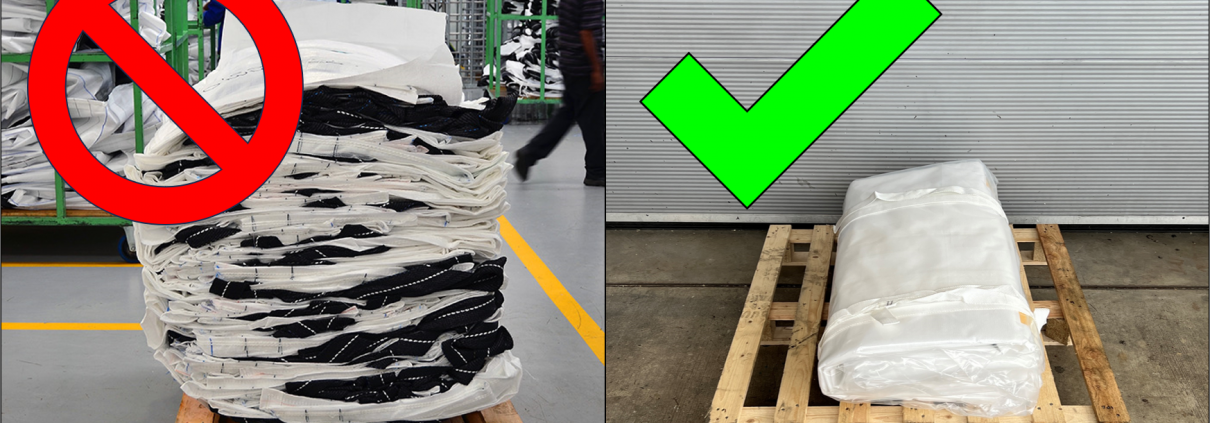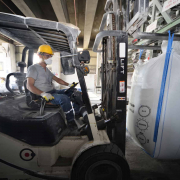Reducing Plastic Packaging in Bulk Materials Transports
Millions of tons of bulk goods are transported nationally, internationally and even overseas every month. Companies from all industries make use of different modes of transport to receive or send out bulk materials. There are many options available to move materials from A to B. For short-distance road transports silo trucks or rail wagons are a common option. As soon as the material needs to be transported on a ship the common choice is the standardized shipping container.
While road transports in silo trucks or rail wagons can be done mostly without additional packaging, they will generate additional costs for cleaning of the transport medium depending on the bulk good which is transported. This is a different case with shipping containers. Usually the bulk material in a shipping container is transported with additional packaging around it. This is done to protect the container from the bulk material and also protect the bulk material from any moisture or dirt coming from the container.
The packaging used for bulk materials is typically a so called “Big Bag” or FIBC. It comes in various sizes, the most common ones contain 1m³ or 2m³ of volume. These Big Bags are filled with the respective material individually and stored until ready for shipment. Then they will be loaded one by one into the shipping container by an operator with a forklift. The same procedure occurs at the receiving end. An operator with a forklift will take out every Big Bag individually, store them at a designated location und discharge them one by one.
Another option for packaging bulk materials in a shipping container is the “Linerbag” or “Container Liner”. This bag is installed into the container before the material is loaded into it. The Linerbag covers the whole volume of the container and can be secured with different methods to stay in place for the loading procedure. Financial savings are generated by reducing loading and discharging time, simplifying process steps and increasing utilization of loading capacity.
But how does the linerbag reduce plastic packaging for bulk materials? The answer is simply mathematical. Compare a container loaded with 24 individual Big Bags to a container loaded with one Linerbag. The 24 Big Bags “surround” the material on 6 edges 24 times, while the Linerbag surrounds the material only once. One Big Bag weighs approximately 1.5kg, multiplied with 24 this is 36kg of plastic packaging per container. One standard Linerbag on the contrary weighs only 16kg. That is a reduction of plastic packaging by over 50%! If you would use this example for a supply chain with 3,000 containers per year you would end up saving 60,000kg of plastic waste annually.
For the above mentioned reasons many companies are switching to Linerbags. While suppliers of Linerbags can be found quite easily, manufacturers of machinery to load and discharge linerbags are still fighting for visibility in this new niche. WWTec has been supporting the trend towards Linerbags for over 20 years and is specialized in loading and unloading equipment for all kinds of bulk materials. Many Linerbag suppliers recommend WWTec’s solutions as the best in the market, often referencing the Siloadmaxx portfolio which is developed and distributed by WWTec around the world.
If you are working on shifting your supply chain from Big Bags to Linerbags and want to profit from its advantages contact WWTec today to get support for your project.





